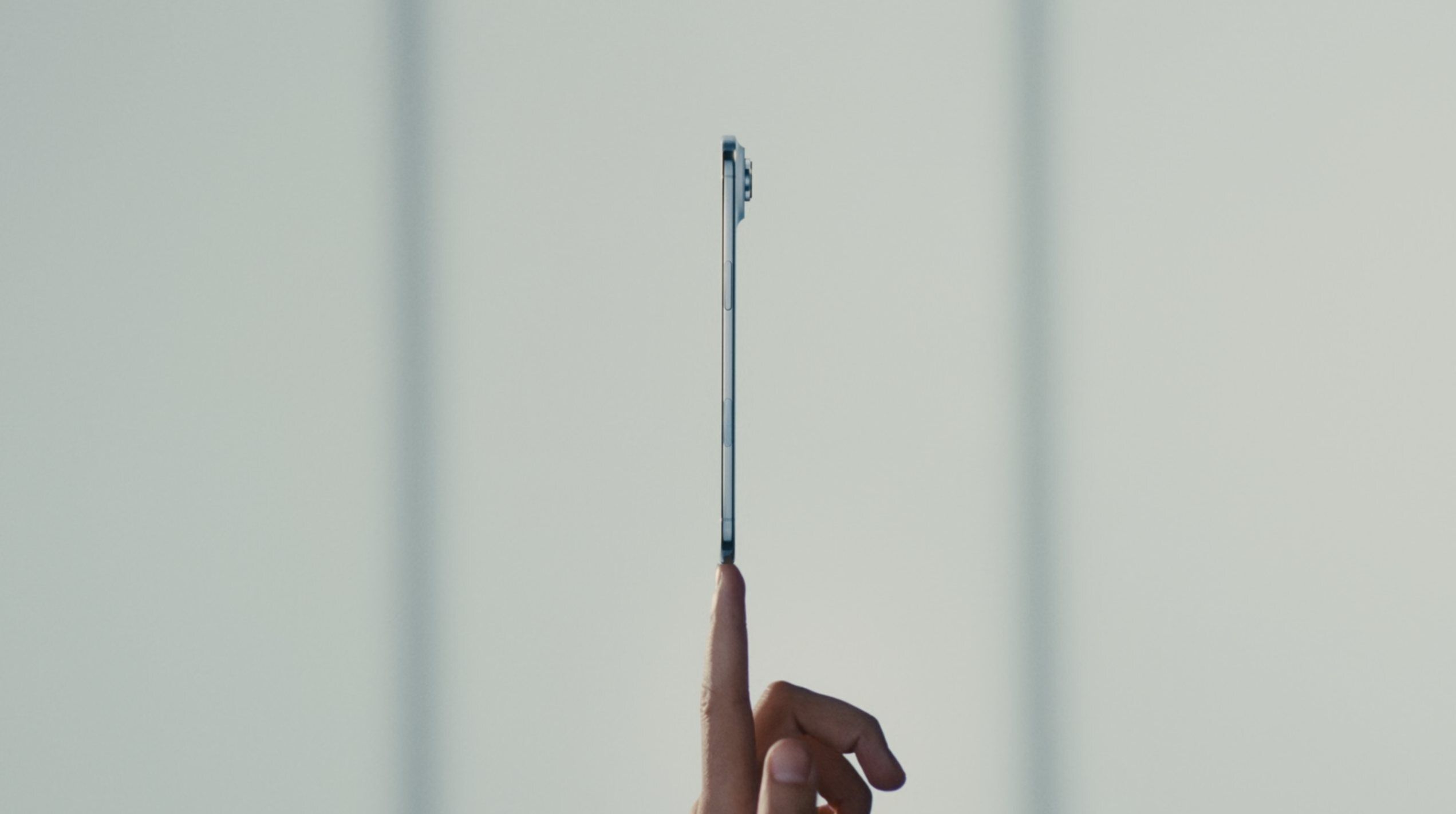Apple just dropped the iPhone Air, measuring an impossibly thin 5.6mm - making it the slimmest iPhone ever created. The device packs pro-level performance into a featherweight design that could reshape the entire smartphone landscape. This isn't just another iPhone iteration; it's the opening move in Apple's three-year plan to completely reimagine its flagship lineup.
Apple just redefined what's possible in smartphone engineering. CEO Tim Cook took the stage this afternoon to unveil the iPhone Air, a device that measures just 5.6mm thick while promising "pro performance in a thin and light design." The announcement sent immediate ripples through the tech community, with early hands-on reports describing it as "almost impossibly thin" to hold.
The engineering feat becomes even more impressive when you dive into the specs. The iPhone Air sports a 6.5-inch ProMotion display cranking out 120Hz refresh rates and hitting 3,000 nits of peak brightness - numbers that would make many laptops jealous. Apple wrapped this display in what it calls its "most durable" design yet, featuring a ceramic shield that encases a titanium frame on both sides.
But the real magic happens under that impossibly thin hood. The device runs on Apple's brand-new A19 Pro processor, which the company claims is "the most powerful iPhone chip yet." Alongside that sits Apple's first homegrown C1x modem, delivering speeds that are twice as fast as the previous C1 generation. The company also packed in its new N1 chip design, bringing Wi-Fi 7, Bluetooth 6, and Thread support to the table.
Here's where Apple's engineering team really showed off: despite measuring thinner than most credit cards, the iPhone Air promises all-day battery life with up to 40 hours of video playback. The trick? The device only supports eSIMs, allowing Apple to "maximize battery space" by eliminating the physical SIM card slot entirely. It's a bold move that signals where the industry is heading.
The camera system doesn't disappoint either. A 48-megapixel dual camera setup includes a 12MP telephoto lens, while the front-facing 18MP selfie camera supports Center Stage - a feature that automatically fits everyone into the frame without needing to flip to landscape mode. It's the kind of computational photography magic that Apple has been perfecting for years.
According to a recent report from Bloomberg's Mark Gurman, the iPhone Air represents the opening salvo in Apple's three-year plan to completely revamp its iPhone lineup. We're not talking about incremental spec bumps here - this is about fundamentally new designs and form factors that could reshape how we think about smartphones.












